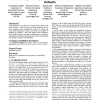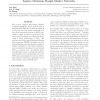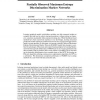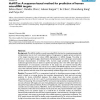14 search results - page 2 / 3 » Competing with Wild Prediction Rules |
GECCO
2007
Springer
13 years 11 months ago
2007
Springer
Credit institutions are seldom faced with problems dealing with single objectives. Often, decisions involving optimizing two or more competing goals simultaneously need to be made...
BMCBI
2008
13 years 5 months ago
2008
Background: Most gene finders score candidate gene models with state-based methods, typically HMMs, by combining local properties (coding potential, splice donor and acceptor patt...
ICML
2008
IEEE
14 years 6 months ago
2008
IEEE
We propose Laplace max-margin Markov networks (LapM3 N), and a general class of Bayesian M3 N (BM3 N) of which the LapM3 N is a special case with sparse structural bias, for robus...
NIPS
2008
13 years 6 months ago
2008
Learning graphical models with hidden variables can offer semantic insights to complex data and lead to salient structured predictors without relying on expensive, sometime unatta...
ALMOB
2008
13 years 5 months ago
2008
Background: MicroRNAs (miRs) are small noncoding RNAs that bind to complementary/partially complementary sites in the 3' untranslated regions of target genes to regulate prot...




